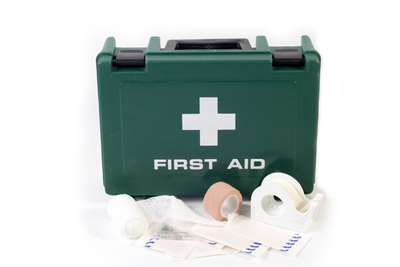First Aid: The Key to a Safe Workplace
The Occupational Safety and Health Administration (OSHA) requires employers to provide a safe and healthy workplace that is reasonably free of hazards for their employees. However, because the administration realizes that accidents are inevitable, OSHA also requires employers to provide the medical and first aid personnel and supplies appropriate for the types of illnesses and injuries capable of occurring in that specific workplace.
Standard 29 CFR, 1910.151(b) requires at least one employee on each shift to be adequately trained to render first aid if a rescue service, infirmary, clinic or hospital is not within three to four minutes of the workplace. This is critical in cases of stopped breathing, uncontrolled bleeding or cardiac arrest, since medical attention is needed immediately.
Employers typically arrange first aid training through the American Red Cross, the National Safety Council (NSC) or a private institution. After completion of a first aid course, successful trainees should receive certificates for adult cardiopulmonary resuscitation (CPR) and first aid. Multiple employees should be trained so that vacations or unexpected absences do not leave the workplace without a certified first aid responder on staff.
First aid programs should cover basic first aid intervention, basic CPR and universal precautions for self-protection. First aid intervention should provide instruction for injuries to the head and neck, eyes, nose, mouth and teeth, chest, abdomen, hands, fingers and feet. Specialized training can also be arranged to train employees to respond specifically to shock, poisoning, burns, temperature extremes, musculoskeletal injuries, bites and stings, medical emergencies and confined spaces. Bloodborne pathogen training should be obtained before an employee handles blood or other bodily fluids.

Although OSHA does not require the general industry to keep specific contents in first aid kits, many employers find it helpful to have a list of basic first aid supplies to use as a starting point. Appendix A of Standard 29 CFR, 1910.151 refers employers to American National Standard (ANSI) Z308.1-1998 “Minimum Requirements for Workplace First-aid Kits” as an example. ANSI suggests the following minimum contents:
- 1 absorbent compress
- 16 adhesive bandages
- 5 yards of adhesive tape
- 10 antiseptic applications
- 6 burn treatment applications
- 2 pairs of medical exam gloves
- 4 sterile pads
- 1 triangular bandage
In addition to keeping an employee on staff who has been trained to render first aid and an adequate first aid kit available, it is also important to implement a first aid program for all employees. Begin by identifying and assessing your specific workplace risks. This will ensure that the trained first aid responders have received the appropriate training and that the first aid kit includes proper supplies. Train workers according to program standards. Specify the steps they should take if a coworker is injured or becomes ill, including who will call for professional emergency services and notify management of the incident.
Evaluate and modify the program frequently to ensure that current standards are always maintained. When reassessing the program, be sure to review the first aid training course. Designate one employee to be responsible for ordering first aid supplies and make sure this employee replaces all supplies that have expired or are nearly expired. Using medical supplies beyond their expiration date is a common OSHA violation.
{ back } |
